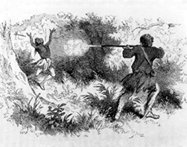Category Archive 'History'
02 Feb 2023

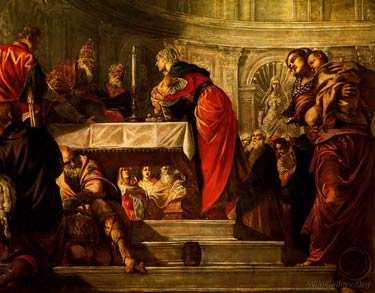
Tintoretto, Presentation of Jesus at the Temple, 1550-1555, Gallerie dell Accademi, Venice
From Robert Chambers, The Book of Days, 1869:
From a very early, indeed unknown date in the Christian history, the 2nd of February has been held as the festival of the Purification of the Virgin, and it is still a holiday of the Church of England. From the coincidence of the time with that of the Februation or purification of the people in pagan Rome, some consider this as a Christian festival engrafted upon a heathen one, in order to take advantage of the established habits of the people; but the idea is at least open to a good deal of doubt. The popular name Candlemass is derived from the ceremony which the Church of Rome dictates to be observed on this day; namely, a blessing of candles by the clergy, and a distribution of them amongst the people, by whom they are afterwards carried lighted in solemn procession. The more important observances were of course given up in England at the Reformation; but it was still, about the close of the eighteenth century, customary in some places to light up churches with candles on this day.
At Rome, the Pope every year officiates at this festival in the beautiful chapel of the Quirinal. When he has blessed the candles, he distributes them with his own hand amongst those in the church, each of whom, going singly up to him, kneels to receive it. The cardinals go first; then follow the bishops, canons, priors, abbots, priests, &c., down to the sacristans and meanest officers of the church. According to Lady Morgan, who witnessed the ceremony in 1820:
‘When the last of these has gotten his candle, the poor conservatori, the representatives of the Roman senate and people, receive theirs. This ceremony over, the candles are lighted, the Pope is mounted in his chair and carried in procession, with hymns chanting, round the ante-chapel; the throne is stripped of its splendid hangings; the Pope and cardinals take off their gold and crimson dresses, put on their usual robes, and the usual mass of the morning is sung.’
Lady Morgan mentions that similar ceremonies take place in all the parish churches of Rome on this day.
It appears that in England, in Catholic times, a meaning was attached to the size of the candles, and the manner in which they burned during the procession; that, moreover, the reserved parts of the candles were deemed to possess a strong supernatural virtue:
‘This done, each man his candle lights,
Where chiefest seemeth he,
Whose taper greatest may be seen; And fortunate to be,
Whose candle burneth clear and bright: A wondrous force and might
Both in these candles lie, which if At any time they light,
They sure believe that neither storm Nor tempest cloth abide,
Nor thunder in the skies be heard, Nor any devil’s spide,
Nor fearful sprites that walk by night,
Nor hurts of frost or hail,’ &c.
The festival, at whatever date it took its rise, has been designed to commemorate the churching or purification of Mary; and the candle-bearing is understood to refer to what Simeon said when he took the infant Jesus in his arms, and declared that he was a light to lighten the Gentiles. Thus literally to adopt and build upon metaphorical expressions, was a characteristic procedure of the middle ages. Apparently, in consequence of the celebration of Mary’s purification by candle-bearing, it became customary for women to carry candles with them, when, after recovery from child-birth, they went to be, as it was called, churched. A remarkable allusion to this custom occurs in English history. William the Conqueror, become, in his elder days, fat and unwieldy, was confined a considerable time by a sickness. ‘Methinks,’ said his enemy the King of France, ‘the King of England lies long in childbed.’ This being reported to William, he said, ‘When I am churched, there shall be a thousand lights in France !’ And he was as good as his word; for, as soon as he recovered, he made an inroad into the French territory, which he wasted wherever he went with fire and sword.
At the Reformation, the ceremonials of Candlemass day were not reduced all at once. Henry VIII proclaimed in 1539:
‘On Candlemass day it shall be declared, that the bearing of candles is done in memory of Christ, the spiritual light, whom Simeon did prophesy, as it is read in. the church that day.’
It is curious to find it noticed as a custom down to the time of Charles II, that when lights were brought in at nightfall, people would say–‘God send us the light of heaven!’ The amiable Herbert, who notices the custom, defends it as not superstitious. Some-what before this time, we find. Herrick alluding to the customs of Candlemass eve: it appears that the plants put up in houses at Christmas were now removed.
Down with the rosemary and bays,
Down with the mistletoe;
Instead of holly now upraise
The greener box for show.
The holly hitherto did sway,
Let box now domineer,
Until the dancing Easter day
Or Easter’s eve appear.
The youthful box, which now hath grace
Your houses to renew,
Grown old, surrender must his place
Unto the crisped yew.
When yew is out, then birch comes in,
And many flowers beside,
Both of a fresh and fragrant kin’,
To honour Whitsuntide.
Green rushes then, and sweetest bents,
With cooler oaken boughs,
Come in for comely ornaments,
To re-adorn the house.
Thus times do shift; each thing in turn does hold;
New things succeed, as former things grow old.’
The same poet elsewhere recommends very particular care in the thorough removal of the Christmas garnishings on this eve:
‘That so the superstitious find
No one least branch left there behind;
For look, how many leaves there be
Neglected there, maids, trust to me,
So many goblins you shall see.’
He also alludes to the reservation of part of the candles or torches, as calculated to have the effect of protecting from mischief:
‘Kindle the Christmas brand, and then
Till sunset let it burn,
Which quenched, then lay it up again, Till Christmas next return.
Part must be kept, wherewith to tend
The Christmas log next year;
And where ‘tis safely kept, the fiend Can do no mischief there.’
Considering the importance attached to Candlemass day for so many ages, it is scarcely surprising that there is a universal superstition throughout Christendom, that good weather on this day indicates a long continuance of winter and a bad crop, and that its being foul is, on the contrary, a good omen. Sir Thomas Browne, in his Vulgar Errors, quotes a Latin distich expressive of this idea:
‘Si sol splendescat Maria purificante,
Major erit glacies post festum quam fait ante;
which maybe considered as well translated in the popular Scottish rhyme:
If Candlemass day be dry and fair,
The half o’ winter’s to come and mair;
If Candlemass day be wet and foul,
The half o’ winter’s gave at Yule.’
In Germany there are two proverbial expressions on this subject: 1. The shepherd would rather see the wolf enter his stable on Candlemass day than the sun; 2. The badger peeps out of his hole on Candlemass day, and when he finds snow, walks abroad; but if he sees the sun shining, he draws back into his hole. It is not improbable that these notions, like the festival of Candlemass itself, are derived from pagan times, and have existed since the very infancy of our race. So at least we may conjecture, from a curious passage in Martin’s Description of the Western Islands. On Candlemass day, according to this author, the Hebrideans observe the following curious custom:
The mistress and servants of each family take a sheaf of oats and dress it up in women’s apparel, put it in a large basket, and lay a wooden club by it, and this they call Brύd’s Bed.; and then the mistress and servants cry three times, “Brύd is come; Brύd is welcome!” This they do just before going to bed, and when they rise in the morning they look among the ashes, expecting to see the impression of Brύd’s club there; which, if they do, they reckon it a true presage of a good crop and prosperous year, and the contrary they take as an ill omen.
——————————————————————
Groundhog Day is simply a modern commercialized adaptation of the earlier weather traditions associated with the Christian feast day.
26 Dec 2022

Rembrandt. The Martyrdom of St. Stephen. 1625. Oil on panel. Musée des Beaux-Arts, Lyons
From Robert Chambers, The Book of Days, 1869:
Feast Day: St. Stephen, the first martyr.
St. Stephen’s Day
To St. Stephen, the Proto-martyr, as he is generally styled, the honour has been accorded by the church of being placed in her calendar immediately after Christmas-day, in recognition of his having been the first to seal with his blood the testimony of fidelity to his Lord and Master. The year in which he was stoned to death, as recorded in the Acts of the Apostles, is supposed to have been 33 A.D. The festival commemorative of him has been retained in the Anglican calendar. Read the rest of this entry »
25 Dec 2022


From Robert Chambers, The Book of Days, 1869:
Born: Jesus Christ, Saviour of the world; Sir Isaac Newton, natural philosopher, 1642, Woolsthorpe, near Grantham; Johann Jacob Reiske, oriental scholar, 1716, Zorbig, Saxony; William Collins, poet, 1720, Chichester; Richard Person, Greek scholar, 1759, East Ruston, Norfolk.
and my wife, Karen.
Feast Day: St. Eugenia, virgin and martyr, about 257. St. Anastasia, martyr, 304. Another St. Anastasia.
Christmas Day
The festival of Christmas is regarded as the greatest celebration throughout the ecclesiastical year, and so important and joyous a solemnity is it deemed, that a special exception is made in its favour, whereby, in the event of the anniversary falling on a Friday, that day of the week, under all other circumstances a fast, is transformed to a festival.
That the birth of Jesus Christ, the deliverer of the human race, and the mysterious link connecting the transcendent and incomprehensible attributes of Deity with human sympathies and affections, should be considered as the most glorious event that ever happened, and the most worthy of being reverently and joyously commemorated, is a pro-position which must commend itself to the heart and reason of every one of His followers, who aspires to walk in His footsteps, and share in the ineffable benefits which His death has secured to mankind. And so though at one period denounced by the Puritans as superstitious, and to the present day disregarded by Calvinistic Protestants, as unwarranted by Scripture, there are few who will seriously dispute the propriety of observing the anniversary of Christ’s birth by a religious service. … Read the rest of this entry »
06 Dec 2022


St. Nicholas, bishop of Myra, d. 6 December 345 or 352
St. Nicholas was reportedly born in the city of Patara in Lycia in Asia Minor, heir to a wealthy family. He succeeded an uncle as bishop of Myra.
Nicholas left behind a legend of secret acts of benevolence and miracles (in Greek, he is spoken of as “Nikolaos o Thaumaturgos” — Nicholas the Wonder-Worker).
One of the saint’s prominent legends asserts that, in a time of famine, he foiled the crime of Fourth Century Sweeney Todd, an evil butcher who kidnapped and murdered three children, intending to market their remains as ham. St. Nicholas not only exposed the murder, but healed and resurrected the children intact.
Nicholas is also renowned for providing dowries for each of three daughters of an impoverished nobleman,who would otherwise have been unable to marry and who were about to be forced to prostitute themselves to live. In order to spare the sensibilities of the family, Nicholas is said to have secretly thrown a purse of gold coins into their window on each of three consecutive nights.
St. Nicholas’ covert acts of charity led to a custom of the giving of secret gifts concealed in shoes deliberately left out for their receipt on his feast day, and ultimately to the contemporary legend of Santa Claus leaving gifts in stockings on Christmas Eve.
St. Nicholas evolved into one of the most popular saints in the Church’s calendar, serving as patron of sailors, merchants, archers, thieves, prostitutes, pawnbrokers, children, and students, Greeks, Belgians, Frenchmen, Romanians, Bulgarians, Georgians, Albanians, Russians, Macedonians, Slovakians, Serbians, and Montenegrins, and all residents of Aberdeen, Amsterdam, Barranquilla, Campen, Corfu, Freiburg, Liverpool, Lorraine, Moscow, and New Amsterdam (New York).
His relics were stolen and removed to Bari to prevent capture by the Turks, and are alleged to exude a sweet-smelling oil down to the present day.
24 Nov 2022

As published in the Massachusetts Centinel, Wednesday, October 14, 1789
24 Nov 2022

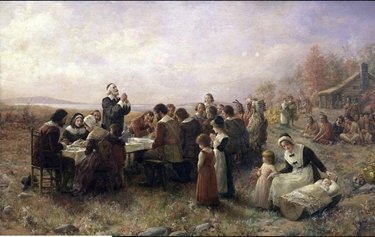
Mike Franc, at Human Events in 2005, identified the real reason for celebration at the first Thanksgiving.
Writing in his diary of the dire economic straits and self-destructive behavior that consumed his fellow Puritans shortly after their arrival, Governor William Bradford painted a picture of destitute settlers selling their clothes and bed coverings for food while others “became servants to the Indians,” cutting wood and fetching water in exchange for “a capful of corn.” The most desperate among them starved, with Bradford recounting how one settler, in gathering shellfish along the shore, “was so weak– he stuck fast in the mud and was found dead in the place.”
The colony’s leaders identified the source of their problem as a particularly vile form of what Bradford called “communism.’ Property in Plymouth Colony, he observed, was communally owned and cultivated. This system (“taking away of property and bringing [it] into a commonwealth’) bred “confusion and discontent” and “retarded much employment that would have been to [the settlers’] benefit and comfort.”
Just how did the Pilgrims solve the problem of famine? In addition to receiving help from the local Indians in farming, they decided allow the private ownership of individual plots of land.
On the brink of extermination, the Colony’s leaders changed course and allotted a parcel of land to each settler, hoping the private ownership of farmland would encourage self-sufficiency and lead to the cultivation of more corn and other foodstuffs.
As Adam Smith would have predicted, this new system worked famously. “This had very good success,” Bradford reported, ‘for it made all hands very industrious.” In fact, “much more corn was planted than otherwise would have been” and productivity increased. “Women,” for example, “went willingly into the field, and took their little ones with them to set corn.”
The famine that nearly wiped out the Pilgrims in 1623 gave way to a period of agricultural abundance that enabled the Massachusetts settlers to set down permanent roots in the New World, prosper, and play an indispensable role in the ultimate success of the American experiment.
A profoundly religious man, Bradford saw the hand of God in the Pilgrims’ economic recovery. Their success, he observed, “may well evince the vanity of that conceit–that the taking away of property– would make [men] happy and flourishing; as if they were wiser than God.’ Bradford surmised, ‘God in his wisdom saw another course fitter for them.”
The real story of Thanksgiving is the triumph of capitalism and individualism over collectivism and socialism, which is the summation of the story of America.
05 Nov 2022

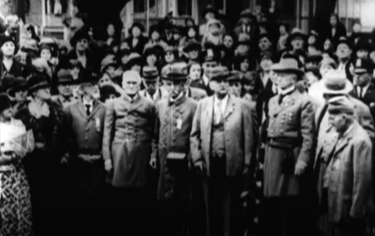
At the First Battle of Bull Run, General Jackson turned the tide of battle by having his brigade deliver a downhill charge with fixed bayonets that shattered the Union advance. “And, When you charge,” Jackson ordered his men: “yell like Furies!”
Smithsonian has an interesting video of a Confederate Reunion at which a number of very old men perform the famous Rebel Yell.
————————–
You might well think that the famous Rebel Yell is long extinct, but you’d be wrong.
Fox hunters traditionally signal viewing the fox with a cry of “Tally-ho!.” But in Old Virginia, the aboriginal element responds to the appearance of the fox (or the rabbit in the case of beagle or basset footpacks), not with a “Tally ho!. but with the old-time Rebel Yell.
Getting involved with the Old Dominion Hounds and fox hunting in Fauquier County, I inevitably became acquainted with the renowned 80-odd-year-old retired huntsman Melvin Poe.
Fox hunting is just another of the Field Sports and it is really a natural extension of the better known kinds of hunting and fishing. Melvin and I immediately recognized each other as the sorts of hunting and fishing keen rural rednecks that my disapproving female relatives would refer to as “woodrats.”
If I ran into Melvin at an Old Dominion meet, he and I would often car follow the hunt in my SUV. Melvin knew the Old Dominion country like the back of his hand. He’d hunted it for many decades. And Melvin had about as many inhibitions about entering and crossing posted private ground as I did when I was 17.
Following a hunt with Melvin as guide was sure to have us finding foxes before the pack ever showed up. One day, Melvin posted us along a small stream, and sure enough! a small parade of foxes began vacating the area along the far bank with no sign or sound of hounds or horn nearby. Melvin drew himself up and commenced saluting those foxes with loud Rebel Yells. I stood there admiring all this, but soon found myself fixed with Melvin’s imperative eye. I had no choice. I found myself there, in the Virginia woods, doing my best to deliver the traditional Rebel Yell like a good Confederate. Needless to say, the huntsman Gerald and the mounted field heard our commotion and after an interval arrived to pick up the scent.
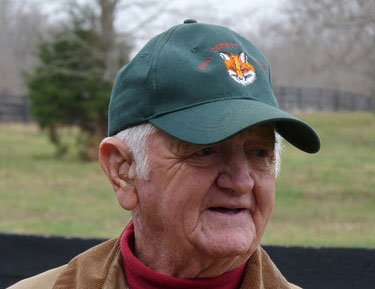
Melvin Poe.
05 Nov 2022

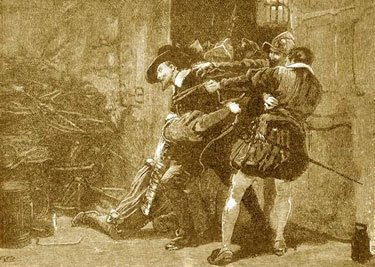
Remember, remember!
The fifth of November,
Gunpowder, treason, and plot;
There is no reason
Why the Gunpowder treason
Should ever be forgot!
Early in the morning of November 5, Guy Fawkes crept, torch in hand, into the cellar beneath the House of Lords in the Palace of Westminster. In that cellar, he and his fellow conspirators had previously placed a cache of 1800 pounds ((36 barrels, or 800 kg) of gunpowder. Just as he was about to ignite the barrels, blowing himself and the House of Lords to Kingdom Come, the torch was snatched from his hand by a man named Peter Heywood.
Fawkes was arrested and taken before the privy council where he remained defiant. When asked by one of the Scottish lords what he had intended to do with so much gunpowder, Fawkes answered him, “To blow you Scotch beggars back to your own native mountains!”
So went the attempted Gunpowder Plot of 1605.
The intention of the plotters was to use the explosion, timed to coincide with the opening of Parliament, to kill King James I and eliminate much of the ruling Protestant aristocracy. They also intended to kidnap the royal children, then raise the standard of revolt in the Midlands with the object of restoring the freedom to practice Catholicism in England.

11 Oct 2022

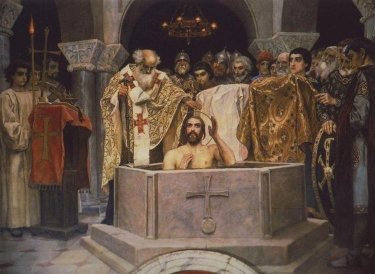
Victor Vasnetsov, Baptism of Prince Vladimir, 1885-1893.
Tim Snyder explains that Vladimir Putin’s view of History, and territorial claims based thereon, are utter and complete nonsense.
Crimea is a district of Ukraine, as recognized by international law, and by treaties between Ukraine and the Russian Federation. Putin, however, has taken the view, for more than a decade now, that international law must yield to what he calls “civilization,” meaning his eccentric understanding of the past. The annoying features of the world that do not fit his scheme of the past are classified as alien, and illegitimate, and subject to destruction (Ukraine, for example).
The example of Crimea lays bare a problem within Putin’s thinking. The idea that there is some sort of immutable “civilization,” outside of time and human agency, always turns out to be based upon nothing. In the case of Crimea, Putin’s notion that the peninsula was “always” Russia is absurd, in almost more ways than one can count.
The Crimean Peninsula has been around for quite a long time, and Russia is a recent creation. What Putin has in mind when he speaks of eternity and is the baptism of a ruler of Kyiv, Valdimar, in 988. From this moment of purity, we are to understand, arose a timeless reality of Russian Crimea (and a Russian Ukraine). which we all must accept or be subject to violence. Crimea becomes “holy.”
It takes time to recount even a small portion of the ways in which this is nonsensical. First of all, the historical event itself is not at all clear. One source says that Valdimar was baptized in Crimea, as Putin likes to say; others that he was baptized in Kyiv. None of the sources date from the period itself, and so we cannot be certain that it took place at all, let alone of the locale. (If Valdimar was indeed baptized in Crimea, Putin’s logic would seem to suggest that the peninsula belongs to modern Greece, since the presumed site was part of Byzantium at the time.)
Valdimar was, to put it gently, not a Russian. There were no Russians at the time. He was the leader of a clan of Scandinavian warlords who had established a state in Kyiv, having wrenched the city from the control of Khazars. His clan was settling down, and the conversion to Christianity was part of the effort to build a state. It was called “Rus,” apparently from a Finnish word for the slavetrading company that brought the Vikings to Kyiv in the first place. It was not called “Rus” because of anything to do with today’s Russia — nor could it have been, since there was no Russia then, and no state would bear that name for another seven hundred years. Moscow, the city, did not exist at the time.
Baptism, whatever its other merits, does not create some kind of timeless continuum of power over whatever range of territory some later figure chooses to designate. If it did, international relations would certainly look very different. When Emperor Constantine converted to Christianity, the Roman Empire controlled what is now Portugal, Spain, France, the Balkans, Israel, Turkey, North Africa… But we would be very surprised to hear an Italian leader (even now) cite Constantine’s baptism to claim all of these countries.
To take an example of another east European baptism: at the moment when the Lithuanian grand duke converted to Christianity, he ruled not only today’s Lithuania, but also what is now Belarus, most of what is now Ukraine, and a portion of what is now Russia. By way of baptism in 1386 he was able to marry the Polish king (who was a girl) and take the Polish crown. The Lithuanians at the time were also deeply engaged in Crimea, fighting the Crimean Khanate. Taking advantage of fractures and power struggles, the Lithuanians integrated sizable numbers of Crimean Tatars into their own armed forces, and allowed them and their descendants to settle in Lithuania, to enter commercial trades (such as tanning), to build mosques, and to print holy books.
In 1410, when the Lithuanian Grand Duke defeated the Teutonic Knights in the famous battle of Grünwald, some of his fighters were Crimean Tatars. Ostroh, in what is now Ukraine, is known as the place where the first slavonic bible was published, but it was also the site of a mosque for Crimean Tatars. Navahrudak, in what is now Belarus, is the birthplace of the famous Polish Romantic poet Adam Mickiewicz; it too was the site of a mosque for Crimean Tatars. In my office I have a printed edition of a kitab, a Crimean Tatar prayer book from the Grand Duchy of Lithuania, using Arabic script, but in a Polish-Belarusian language with Turkish phrases. Its first words, enticingly, are “This is the key to heaven.” It bespeaks a coherent Crimean Tatar culture that endured for centuries extended well beyond the borders of the Crimean Khanate itself.
I like to think that this Lithuanian-Polish-Belarusian-Ukrainian-Crimean history is worth knowing — I am busily teaching it — but if the Lithuanian president were to proclaim today that Jogaila’s baptism in 1386 somehow gave him the right to rule Poland, Belarus, Ukraine and its Crimean province, we would be puzzled.
In one respect, though, our imaginary Italian or Lithuanian claims are less nonsensical than the Russian one. Even if we were to accept every other Putinesque oddity, including the profound fallacy of the legitimation of present borders by ancient baptisms, we would be brought to a halt by geography. Putin’s mythical structure is based upon the restoration of Rus, an east European entity centered in Kyiv whose high point was a thousand years ago. The Lithuanian and Italian governments are based in Vilnius and Rome, which were also the ancient capitals. Putin is talking about a state that is distant not only in time but in space. Moscow was not the capital of Rus; it did not exist when Valdimar was baptized.
RTWT
Really, it’s the other way around. If we are going by History, Ukraine belongs to Poland (or Lithuania), and “Russia” (i.e. Moscow) belongs to Kiev (i.e. Ukraine).
10 Oct 2022


Christopher Columbus (detail), from Alejo Fernández, La Virgen de los Navegantes, circa 1505 to 1536, Alcázares Reales de Sevilla.
In his magisterial biography, Admiral of the Ocean Sea, 1942, Samuel Elliot Morrison observes:
[Christopher Columbus did] more to direct the course of history than any individual since Augustus Caesar. …
The voyage that took him to “The Indies” and home was no blind chance, but the creation of his own brain and soul, long studied, carefully planned, repeatedly urged on indifferent princes, and carried through by virtue of his courage, sea-knowledge and indomitable will. No later voyage could ever have such spectacular results, and Columbus’s fame would have been secure had he retired from the sea in 1493. Yet a lofty ambition to explore further, to organize the territories won for Castile, and to complete the circuit of the globe, sent him thrice more to America. These voyages, even more than the first, proved him to be the greatest navigator of his age, and enabled him to train the captains and pilots who were to display the banners of Spain off every American cape and island between Fifty North and Fifty South. The ease with which he dissipated the unknown terrors of the Ocean, the skill with which he found his way out and home, again and again, led thousands of men from every Western European nation into maritime adventure and exploration.
The whole history of the Americas stem from the Four Voyages of Columbus; and as the Greek city-states looked back to the deathless gods as their founders, so today a score of independent nations and dominions unite in homage to Christopher the stout-hearted son of Genoa, who carried Christian civilization across the Ocean Sea.
An annual post.
11 Sep 2022


Captain Rescorla in action at Ia Drang, Republic of Vietnam, 15 November 1965.
photograph: Peter Arnett/AP.
Born in Hayle, Cornwall, May 27, 1939, to a working-class family, Rescorla joined the British Army in 1957, serving three years in Cyprus. Still eager for adventure, after army service, Rescorla enlisted in the Northern Rhodesia Police.
Ultimately finding few prospects for advancement in Britain or her few remaining colonies, Rescorla moved to the United States, and joined the US Army in 1963. After graduating from Officers’ Candidate School at Fort Benning, Georgia in 1964, he was assigned as a platoon leader to Bravo Company of the 2nd Battalion, 7th Cavalry, Third Brigade of the 1st Cavalry Division (Airmobile). Rescorla’s serious approach to training and his commitment to excellence led to his men to apply to him the nickname “Hard Corps.”
The 2nd Battalion of the 7th Cavalry was sent to Vietnam in 1965, where it soon engaged in the first major battle between American forces and the North Vietnamese Army at Ia Drang.
The photograph above was used on the cover of Colonel Harold Moore’s 1992 memoir We Were Soldiers Once… and Young, made into a film starring Mel Gibson in 2002. Rescorla was omitted from the cast of characters in the film, which nonetheless made prominent use of his actual exploits, including the capture of the French bugle and the elimination of a North Vietnamese machine gun using a grenade.
For his actions in Vietnam, Rescorla was awarded the Silver Star, the Bronze Star (twice), the Purple Heart, and the Vietnamese Cross of Gallantry. After Vietnam, he continued to serve in the Army Reserve, rising to the rank of Colonel by the time of his retirement in 1990.
Rick Rescorla became a US citizen in 1967. He subsequently earned bachelor’s, master’s, and law degrees from the University of Oklahoma, and proceeded to teach criminal law at the University of South Carolina from 1972-1976, before he moved to Chicago to become Director of Security for Continental Illinois Bank and Trust.
In 1985, Rescorla moved to New York to become Director of Security for Dean Witter, supervising a staff of 200 protecting 40 floors in the South Tower of the World Trade Center. (Morgan Stanley and Dean Witter merged in 1997.) Rescorla produced a report addressed to New York’s Port Authority identifying the vulnerability of the Tower’s central load-bearing columns to attacks from the complex’s insecure underground levels, used for parking and deliveries. It was ignored.
On February 26, 1993, Islamic terrorists detonated a car bomb in the underground garage located below the North Tower. Six people were killed, and over a thousand injured. Rescorla took personal charge of the evacuation, and got everyone out of the building. After a final sweep to make certain that no one was left behind, Rick Rescorla was the last to step outside.
—————————————-

Directing the evacuation on September 11th.
Security Guards Jorge Velasquez and Godwin Forde are on the right.
photograph: Eileen Mayer Hillock.
Rescorla was 62 years old, and suffering from prostate cancer on September 11, 2001. Nonetheless, he successfully evacuated all but 6 of Morgan Stanley’s 2800 employees. (Four of the six lost included Rescorla himself and three members of his own security staff, including both the two security guards who appear in the above photo and Vice President of Corporate Security Wesley Mercer, Rescorla’s deputy.) Rescorla travelled personally, bullhorn in hand, as low as the 10th floor and as high as the 78th floor, encouraging people to stay calm and make their way down the stairs in an orderly fashion. He is reported by many witnesses to have sung “God Bless America,” “Men of Harlech, ” and favorites from Gilbert & Sullivan operettas. “Today is a day to be proud to be an American,” he told evacuees.
A substantial portion of the South Tower’s workforce had already gotten out, thanks to Rescorla’s efforts, by the time the second plane, United Airlines Flight 175, struck the South Tower at 9:02:59 AM. Just under an hour later, as the stream of evacuees came to an end, Rescorla called his best friend Daniel Hill on his cell phone, and told him that he was going to make a final sweep. Then the South Tower collapsed.
Rescorla had observed a few months earlier to Hill, “Men like us shouldn’t go out like this.” (Referring to his cancer.) “We’re supposed to die in some desperate battle performing great deeds.” And he did.
—————————————-
His hometown of Hayle in Cornwall has erected a memorial.

—————————————-
2,996 was a project put together by blogger Dale Roe to honor each victim of the September 11, 2001 attacks. 3,061 blogs committed to posting tributes to each victim. Never Yet Melted’s tribute was to Rick Rescorla, and is republished annually.
02 Sep 2022


Robert Spencer reminds voters that Joe Biden has always been a skunk.
Back in the 90s, at the height of the Monica Lewinsky scandal, the establishment media hammered home the proposition that the individual character of a chief executive didn’t matter. He could be a cheerful rogue and serial philanderer like Bill Clinton, but the Left insisted that was a private matter and that the only thing Americans should care about was that he was a competent and capable president (which he wasn’t, but that’s another story). These assertions have become the conventional wisdom since then, but Old Joe Biden is now putting them to the test.
On Tuesday, Fox News’ Lisa Boothe enunciated a simple truth that shows that this Lewinsky-era conventional wisdom is wrong and has always been wrong: “One of the biggest lies we were ever told is that Joe Biden is a good man. He is a terrible president. Even worse human being.”
Boothe was spot-on, and it has been clear not just since the beginning of Biden’s political career but also since he was caught plagiarizing back when he was in law school. Boothe added: “If you think about it, this is a guy who led two of the most terrible confirmation hearings in American history, where he smeared and slandered Robert Bork and Clarence Thomas when he was Senate Judiciary chairman.”
On Oct. 23, 1987, the Senate rejected Bork’s nomination to the Supreme Court, largely because of a smear campaign and hysterical false charges that Biden had in great part engineered against the nominee. This was one day short of a month after Biden’s 1988 presidential campaign foundered on his own lies. Biden had delivered a speech full of what he claimed were his own family experiences. “Why is it that Joe Biden is the first in his family ever to go to a university? Why is it that my wife…is the first in her family to ever go to college? Is it because our fathers and mothers were not bright?… Is it because they didn’t work hard? My ancestors, who worked in the coal mines of northeast Pennsylvania and would come after 12 hours and play football for four hours? It’s because they didn’t have a platform on which to stand.”
This was supposed to sound stirring and probably was to those who go in for class warfare rhetoric, but those weren’t really Biden’s family’s experiences at all. He had lifted it all from a speech by British Labour leader Neil Kinnock. Thirty-four years ago, that was enough to derail a presidential campaign; now the same liar is president, and does anyone actually think that between then and now Biden has become honest and trustworthy?
Robert Bork’s widow doesn’t. Mary Ellen Bork wrote in September 2020: “I was there during the four months of vicious political campaigning against this judicial nominee, my husband, and in the Senate hearing room as then-Sen. Biden presided over a rigged hearing full of an unprecedented level of lying and distortion of a man known for his integrity and judicial wisdom. We will all have tears in our eyes if Joe Biden is elected president.” And he was elected, allegedly, and is now president, allegedly, and there is nothing alleged about the tears in our eyes. They’re all too real.
RTWT
/div>

Feeds
|
















